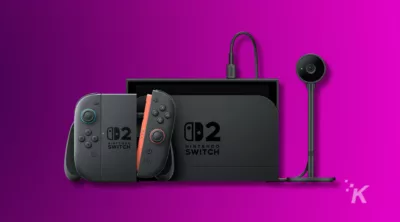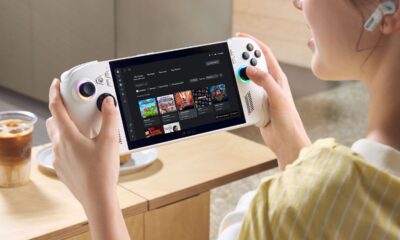Gaming
Review: Alienware 720M wireless gaming mouse
This symmetrical design looks and feels great with any setup.
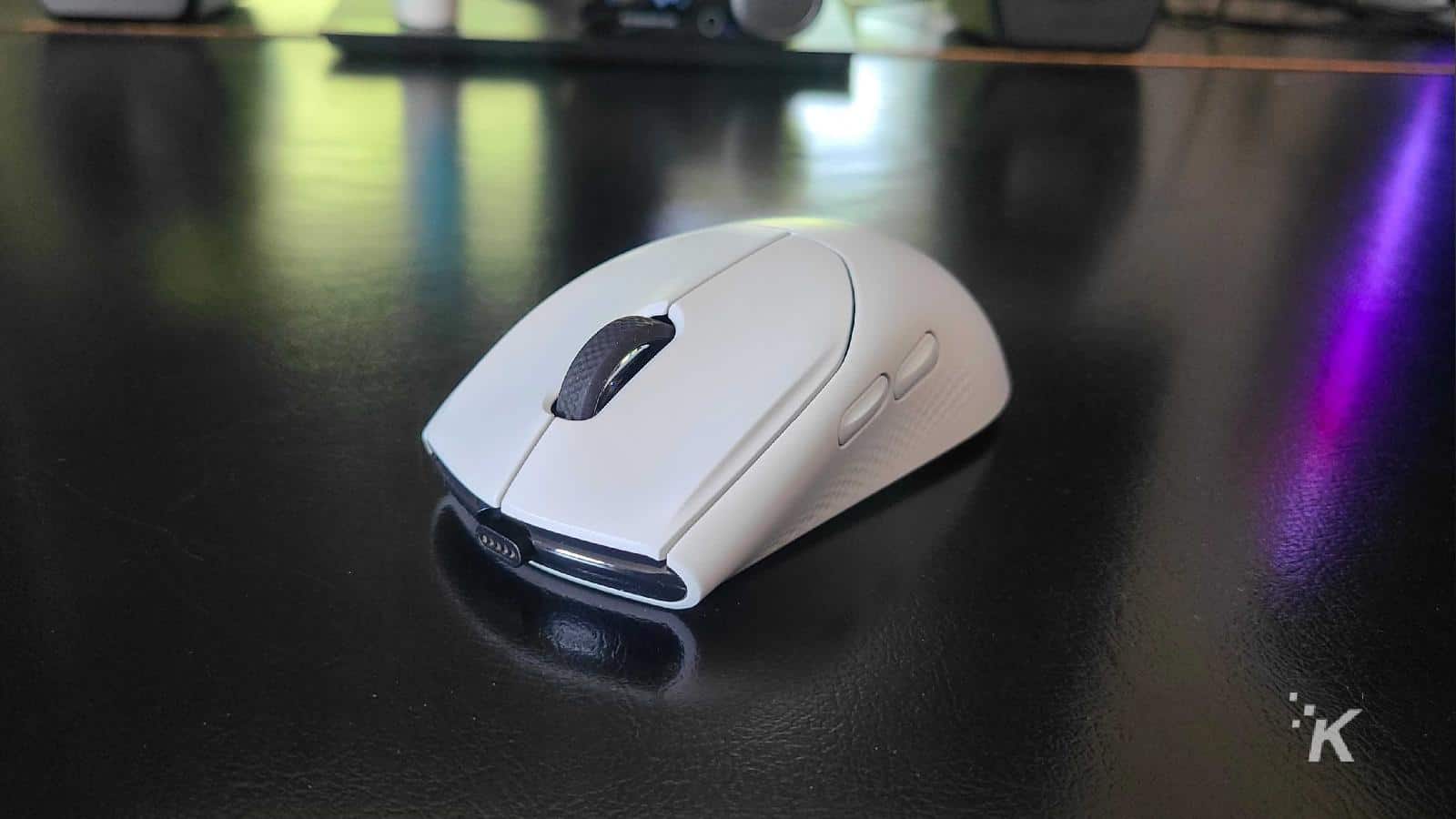
Just a heads up, if you buy something through our links, we may get a small share of the sale. It’s one of the ways we keep the lights on here. Click here for more.
[letsreview postid=”207954″]
Alienware is a well-known name in PC gaming mostly for its prebuilt gaming PCs and laptops. But the company, which is actually Dell’s gaming branch, also offers peripherals. Today, we’re going to be checking out the Alienware 720M tri-mode gaming mouse.
The 720M is a subtle, competitive-style gaming mouse. The tri-mode aspect refers to the three different connection possibilities: Bluetooth, 2.4Ghz wireless, and wired USB.
You can find the 720M on the Alienware website for $149.99, but if you act quickly, it’s currently on sale for $129.99. So let’s see what it’s all about.
What’s in the box?
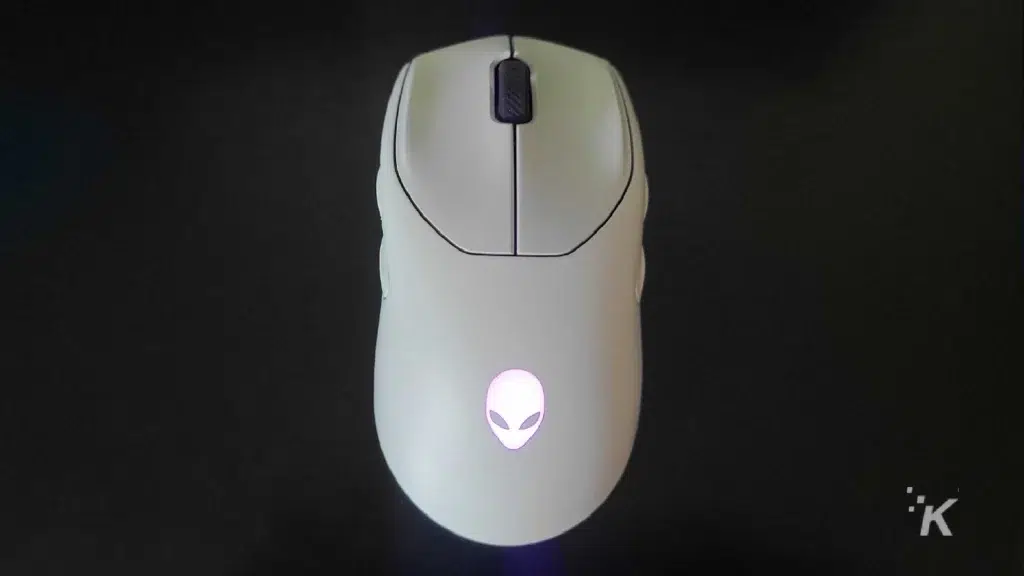
My first impression of the 720M upon opening the box was that it is a very sleek and stylishly designed mouse. It’s long and skinny, only about two and a half inches wide. It has a smooth, white finish with the familiar Alienware logo right on the palm.
Included in the box is a USB to USB-C cable for charging the mouse. There’s also a wireless receiver that you can plug in for the 2.4Ghz wireless connection.
The mouse itself features a familiar design compared to other performance gaming mice. It features two wireless thumb buttons on the side and a rubber thumb wheel that’s easy to grip.
One of the more unique aspects of this mouse is that it is ambidextrous. It is completely symmetrical and can be used either left or right-handed.
There are actually thumb buttons on each side of the mouse, though only one set will be active depending on how you have the mouse set up. And you can easily switch to a left-handed grip with the 720M using Alienware’s downloadable software.
What can this gaming mouse do?
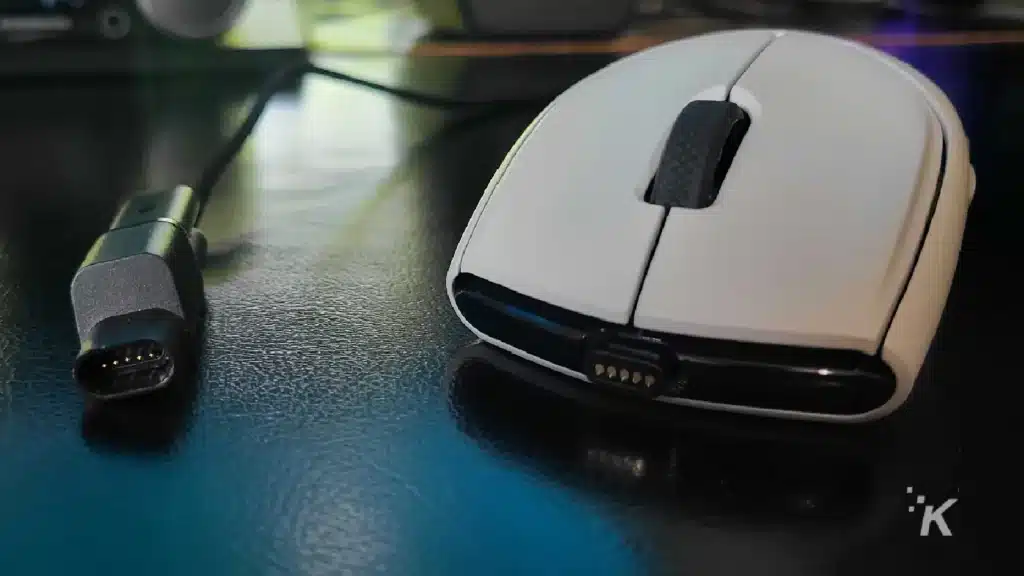
When it comes to features and capabilities, the 720M is pretty standard compared to other gaming mice. It has sensitivity adjustment up to 26,000 DPI, which is probably more than anyone will ever need.
You can save five different DPI profiles and switch between them using a button on the bottom of the mouse.
It would be nice if that button was in a more accessible place so you could change DPI more quickly, but that’s not a huge problem. Most people will find a DPI they like and stay with it most of the time.
One cool feature that the mouse offers is its magnetic USB-C charging cord. The 2.4Ghz dongle that comes with the mouse has an extra USB-C port that you can use for charging.
This makes sure that you can charge the mouse and connect it wirelessly at the same time while only taking up one USB port on your PC. And the cable comes with a magnetic USB-C adapter that lets you quickly and easily connect the mouse to get some juice.
And, of course, it can connect via Bluetooth. So you won’t even have to use the dongle at all to connect to a PC or any other supported device via Bluetooth. The battery lasts for more than 100 hours using a 2.4Ghz connection and a massive 400+ hours via Bluetooth.
Fans of heavy RGB in their gaming peripherals probably won’t be too excited about the 720M. You can light up the Alienware logo on the back with a range of 16.8 million colors, but that’s all.
And to be honest, that’s a major plus for me. The low-profile, white design of the 720M already looks really damn good, and adding a bunch of RGB lights would take away from that style.
How does the Alienware 720M perform?
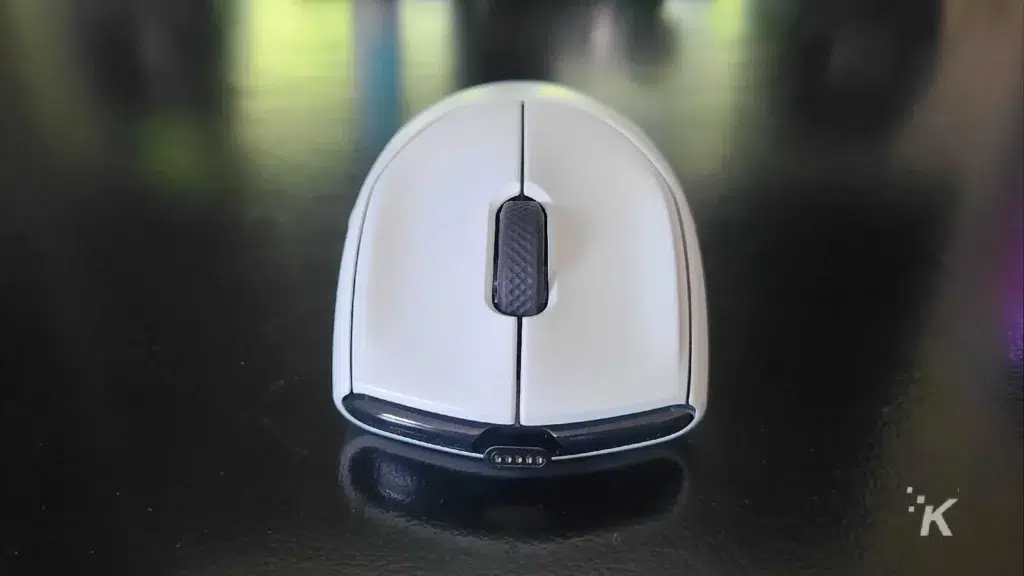
So now it’s time for the million-dollar question: How does the mouse perform in practice? It definitely took a bit of adjustment through some growing pains.
But at the end of the day, the 720M is an impressive performance gaming mouse that feels and performs pretty well.
First, I want to start by talking about the shape of the mouse. Because it is designed for both left and right-handed individuals, the 720M is completely symmetrical.
As a result, it feels a lot different than the ergonomic gaming mice that most of us are used to by now. It definitely took a little getting used to. But it wasn’t noticeable for more than a day or so.
All of the buttons on the 720M feel great. The left and right clicks are very responsive and feel the same every time you use them. Additionally, the mouse wheel is very tactile.
There’s also a nice option in the Alienware software that lets you adjust the sensitivity of your mouse wheel scrolling and I found that to be an incredibly useful feature.
The thumb buttons are equally as polished. They’re easy to push and are high quality so every button press feels the same.
It would be nice if the buttons on both sides were always active, however. It seems like the only way to turn the other side buttons on is by switching to left-handed mode in the software, which disables the original thumb buttons.
One significant issue I had with the 720M involved tracking. When I first started using the mouse, the tracking would cut out pretty consistently when moving the mouse quickly.
A firmware update made this a little better, but it was still noticeable. I ended up enabling and increasing the polling rate delay in the Alienware software and that fixed the problem.
I’m not exactly sure what caused something like that to happen, but it was a bit frustrating going through settings to troubleshoot the issue. Thankfully, changing the polling rate delay seems to have eliminated the problem completely.
Should you buy the Alienware 720M gaming mouse?
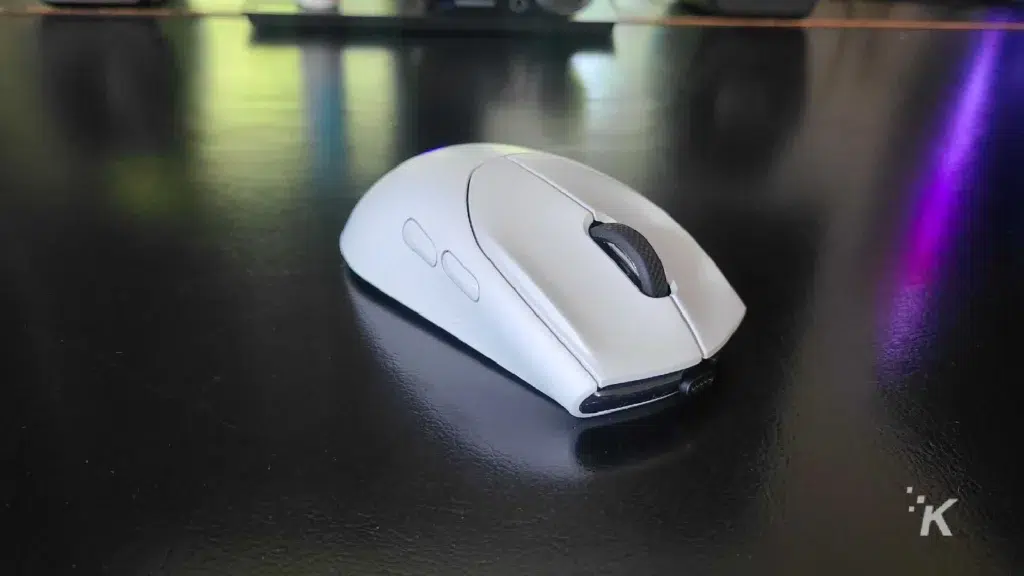
I feel pretty torn about recommending the Alienware 720M gaming mouse. On one hand, the mouse is designed pretty well and despite it being ambidextrous and symmetrical, it feels pretty good in your hand.
When it comes to design, the 720M is incredibly stylish and the white design will work well with just about any setup. Additionally, the mouse performs great in games, after I was able to fix the tracking issues by adjusting the polling rate delay.
On the other hand, the mouse is a little on the expensive side. The normal price of $149.99 isn’t outrageous by any means, but it is a little higher than average.
For example, you can get similar performance and design from the Prime Wireless mouse from SteelSeries, and its wireless version starts at $129.99. Though, you won’t get the ambidextrous option with Prime mice.
But there are other similar wireless mice that are priced even higher than the Alienware 720M. Logitech’s G Pro Wireless goes for $159.99 and the Razer Basilisk Ultimate is $169.99. And you can’t use either one of those options left-handed.
So the price of the 720M isn’t outrageously expensive at all. It’s a big winner in terms of design and feel, and it works great in games after fixing the polling rate delay issue.
If you’re in the market for a wireless gaming mouse that can connect via Bluetooth, 2.4Ghz, or with a USB cable, then you can’t go wrong with the 720M.
Once again, it’s available from the Alienware website for $149.99 (or $129.99 on sale if you act quickly). A black version is also available on Amazon, but it seems to stay out of stock. Best Buy has them in white.
Have any thoughts on this? Let us know down below in the comments or carry the discussion over to our Twitter or Facebook.
Editors’ Recommendations:
- Review: ROCCAT Kone XP – a versatile gaming mouse with tons of customization options
- The SteelSeries Aerox 3 is an ultra-lightweight wireless gaming mouse
- Review: SteelSeries Arctis Nova Pro Wireless headset
- Review: The TronSmart Element T6 Plus Bluetooth speaker
Just a heads up, if you buy something through our links, we may get a small share of the sale. It’s one of the ways we keep the lights on here. Click here for more.
















